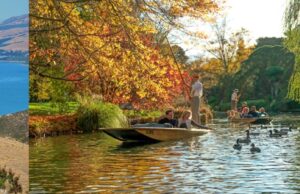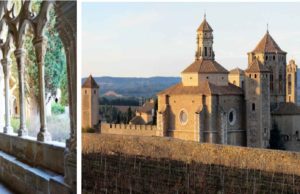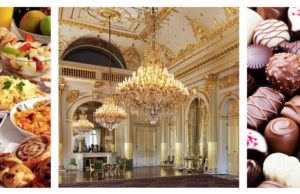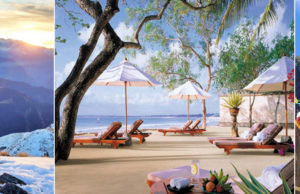
WoT's Hot
We wound our way through the alleys of Zanzibar island, off the coast of Tanzania, in search of Tanzanite, the most rare and enigmatic semi-precious stone, found in this part of the world. It is supposed to hold magical powers of rejuvenating your life; relieving it of stress and giving it a purpose − or so goes the folklore. The center of this extensive archipelago was bustling with locals, going about their daily chores; tourists from around the world taking in a bit of history along with the beauty and charm of Zanzibar; and wayside vendors showing off their wares, which ranged from artifacts to local produce.
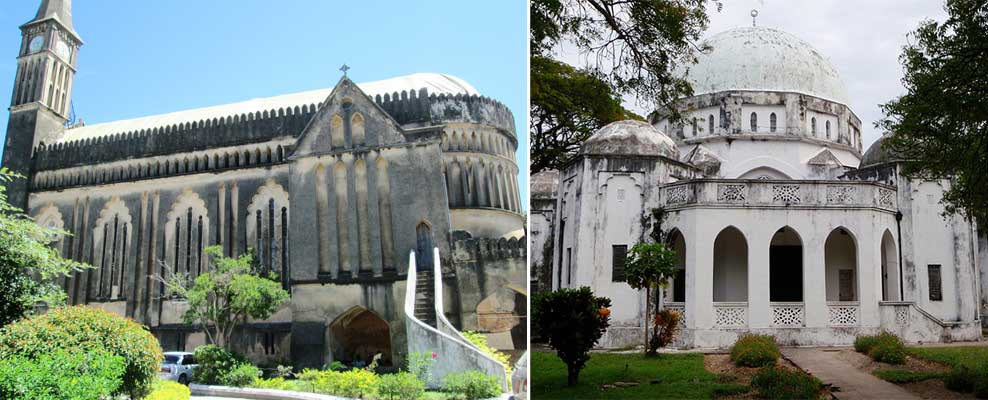
Stone Town may not be as famous as the beaches of Zanzibar, but for those who visit, it is extremely intriguing and strangely compelling. The whitewashed facades of the limestone buildings house the story of Zanzibar, over centuries. The wealth of the Arabian and Persian traders adorn the distinctive doors and verandahs of the dominating buildings while the European invasions have left their mark not only on the architecture but also on the history and culture of this trading city. Anglican cathedrals, Islamic mosques stand shoulder to shoulder in the crowded streets of the spice island that offers a spicy infusion of cultures, religions and architectures. Stepping out of the historical archives onto the streets of Stone Town, one is struck by the colors of the African art collection that lines the pavements; hand woven fabrics and textures that frame the doorways, and the aroma of spices that tickle the senses. It is easy to lose oneself in this labyrinth of time, flitting through pieces of history and transiting through the ensemble of local street art that would grab the attention of any tourist.

While we continued our search for Tanzanite; we did not miss out on an opportunity to pick up the famed “Tinga Tinga” painting − a form of local Masai art, made famous by the artist of the same name; and now the style is adopted by many as a means of earning a livelihood. Our local guide, educated us on the door styles − wooden carved, decorated square gateways meant Arab families; brass studded, intricately designed arches were Indian and simple frames were Swahili. Finally we stopped by an open door, with a flight of staircase leading up to a series of black and white photographs- −the birthplace of Freddie Mercury a.k.a. Farrokh Bulsara, the inspiration behind Queen.

The colors of Zanzibar however camouflage its dark secret that lies buried in the middle of the bazaar lanes. One of the largest and the last open slave market of the world, the Stone Town museum reminds us of the inhuman conditions under which East African slaves were shipped to these islands; “piled up” in subterranean caverns which were flooded daily by the incoming tides and then sold-off for princely sums to the wealthy households and plantation owners across the world. While slave trade had been abolished in 1873 under the British influence, its reminder is well-chronicled in the museum and its shadow follows you through the streets of this island.

We had planned our 3-day trip to Zanzibar at the end of our East African safari. Expecting a quiet oasis of solitude in midst of the aquamarine Indian ocean, encircled by white sandy beaches; we were surprised to be transported back in time in the midst of this bustling 19th Sultanate. It was like recreating Agatha Christie’s screenplay of a balmy Indian summer by the oceanfront, with a hint of British colonialism mixed with African bohemian flavors. Zanzibar truly is an island of contrasting experiences, and has a menu card of beaches to choose from. The northern beaches are more popular, quiet and spectacular − Nungwi and Kendwa; while Paje and Matemwe are more towards the eastern shoreline. A few days in the quiet bliss of Pemba Island, is an alternative that can be considered only if you have the luxury of time. Each beach offers a unique and secluded experience; including snorkeling, scuba diving, sea food options − and of course white sand and sunsets. The idea is not to pack in too many experiences but to soak in the experience of your choice.
Our choice was to soak in the infinity pool of our hotel which stretched out to turquoise-blue ocean that merged into the horizon. We sipped our Bellini (sparkling wine and peach puree cocktail), while we watched the evening sun spray paint different colors across the expanse of the big open sky. The performance was interrupted by the fishing sail boats and tourist yachts; captured as silhouettes against the golden backdrop. From the sandy beach below, the sound of Afro beats wafted, as a group of youth engaged in their routine beach workout. The dutiful attendant quietly filled our glasses, and placed a plateful of delectable nibbles by the poolside, allowing us to enjoy the beauty of Zanzibar.
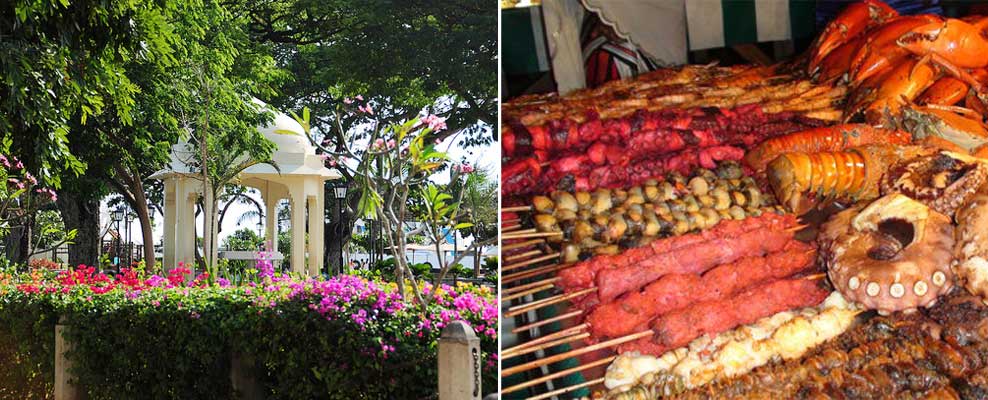
After sunset the heart of Zanzibar’s historic Stone Town turns into a culinary playground. Forodhani Gardens, located by the sea walk, lights up magically, as a multitude of vendors open up their food stalls- offering a variety of meats and seafood on skewers − including spicy kebabs, tandoori prawns, lobsters and grilled octopus, for those eager to engage in a gastronomical adventure. The Zanzibar “pizza” is quite a specialty − filled with your choice of veggies and meat. The lazy promenade comes to life every night; a cacophony of vendors calling out to you, the smell of charcoal cooking, myriads of dimly lit gaslights, a crowd of tourists – and cats, which may often outnumber the tourists. It was these cats that drove us out of the garden, after one such feline creature expressed a deep interest in sharing our meal!
Swahili, the local cuisine, is very similar to Indian meals − rice, chapattis, beans, cassava, maize, stews, curries, sweets − the variety is extensive. But in Zanzibar, the mix of cultures has given birth to multiple cuisines and small shack like restaurants line the narrow winding lanes along the waterfront- offering French, Italian, Portuguese, Middle Eastern, Indian and a choice of many other experiences. Our idea was to experiment, after a taste of kebabs in Forodhani we settled in a cosy roof top restaurant for an eclectic meal, and chased it down with the deliciously fresh coconut water, which we picked up from the locals on the wayside.
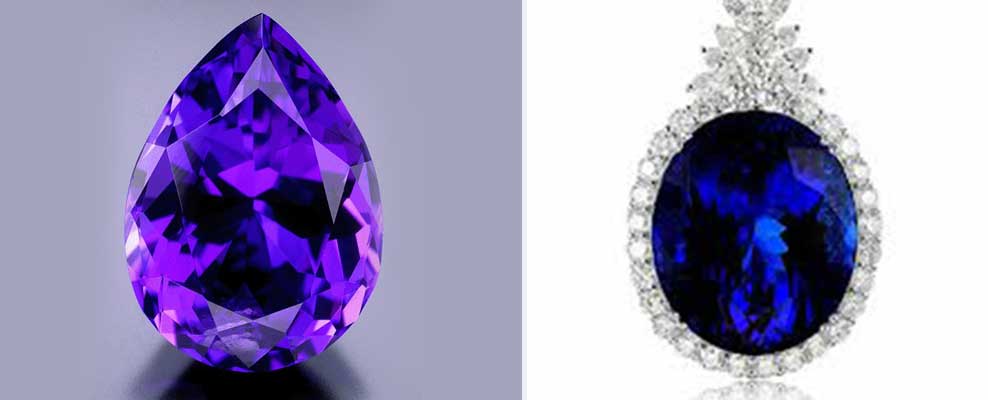
Exploring Stone Town market was our itinerary for the last day before our ferry ride back to Dar es Salaam. We were yet to find the “right” Tanzanite and that was our purpose when we stepped into one of the recommended jewelry stores of Stone Town. The beauty of the jewel was mesmerizing, a vivid violet blue, sparkling like a diamond, not quite a sapphire; flawless, electrifying. The vibrant colors, the serene beauty and infectious energy of Zanzibar seemed to be captured in this gem. We soon realized our collection of memories and experiences of Zanzibar had dimmed our desire for Tanzanite; and had left us feeling relaxed, rejuvenated and content with just being in the present.
Photo credits: Banner Left: thezhotel.com; Banner Center: Audley Travel; Banner Right: Intrepid Travel.
We wound our way through the alleys of Zanzibar island, off the coast of Tanzania, in search of Tanzanite, the most rare and enigmatic semi-precious stone, found in this part of the world. It is supposed to hold magical powers of rejuvenating your life; relieving it of stress and giving it a purpose − or so goes the folklore. The center of thi
What to read next
Featured articles

Welcome Festive Season in Glam, Latin Quarters Launches new #PujoBling Collection with Monami Ghosh
by WOT




































